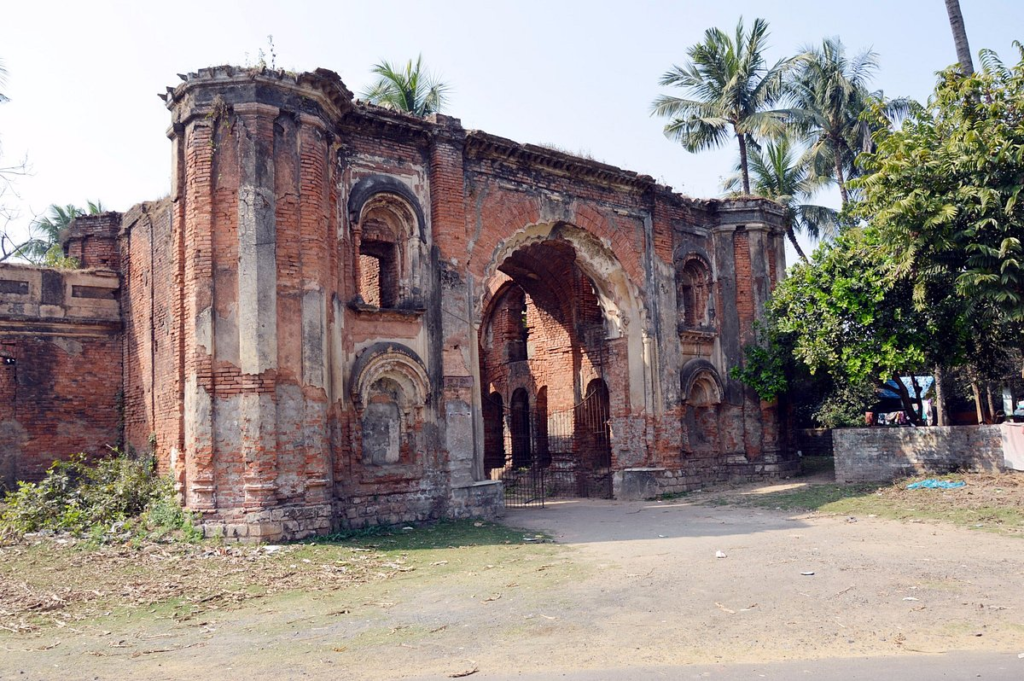
A red brick establishment in Murshidabad stands to tell a centuries-old tale of betrayal. Known as Namak Haram Deorhi, or “Traitor’s Gate,” it once led to the palace of Mir Jafar. History has its heroes and its villains, and Mir Jafar falls in the latter category.

The Namak Haram Deorhi is the royal mansion of Mir Jafar. The Palace is opposite Jafarganj Cemetery in the Lalbagh area in Murshidabad district near Mahimapur in West Bengal state. The Namak Haram Deorhi Palace is not only the mansion of Mir Jafar but also refers to the palace’s main gate. The Palace was Mir Jafar’s residence till he was above the Bengal’s Musnad or till he was the Subha’s Commander-in-chief. Nawab Siraj ud-Daulah was assassinated at this place.
The Namak Haram Deorhi has been featured by turrets and towers. There were cannons around the palace to safeguard the palace from attacks. At present there is only Deorhi which is the gate of the Palace, which has remained in the Palace.

Origin of titles
The palace has great significance in Indian history because the secret meeting before the Battle of Plassey was held here between British officer William Watts, Mir Jafar, and his son Mir Miran. The trio hatched a plot in the palace to overthrow the last Nawab of Bengal Siraj ud-Daulah. Jafar promised Watts to betray the Nawab in the battle. Which was to be held the next day so that the British could win the battle and dethrone the Nawab. The Quran was kept on Mir Jafar’s head along with the hand of Jafar on Miran’s head. Thereafter Mir Jafar took an oath that he would with loyalty perform what he would be asked to which was to defeat Nawab Siraj ud-Daulah in the Battle of Plassey.
According to historian Seir Mutaqherin, Nawab Siraj ud-Daulah was murdered by Muhammad-Ali-Beg on the orders of Mir Miran on the campus of this Deorhi under a Neem tree on July 2, 1757. After he fled to save his life from the battleground. The English victory led to their eventual control of Bengal, which led to the establishment of British rule in India. Before this, the British had only been trading in India under the banner of the English East India Company.

As a result
As a result, the British appointed him as the new Nawab. But his rule was deeply unpopular as a puppet ruler, who is often remembered as a traitor in Indian history. The loss in Plassey eventually led the British Empire to acquire the Diwani of Bengal, which strengthened Britain’s roots in India for the next 200 years.
The old, dilapidated gate is located opposite the Jafarganj Cemetery in the Lalbagh area of Murshidabad. There is a house and an Imambara a few meters inside the gate owned by the descendants of the Jafar family. The Imambara is open to the public on the day of Muharram.
Murshidabad railway station is 3.4 km away from the gate. You can take a three-wheeler, e- rickshaw, or a horse cart to reach here. A cab ride from Kolkata might take around five hours to reach. There are many interesting places of historical interest in walking distance from the deohri like the Jafarganj Cemetery and the palace of Jagat Seth, who started the banking house in Bengal during the rule of the Nawabs.

